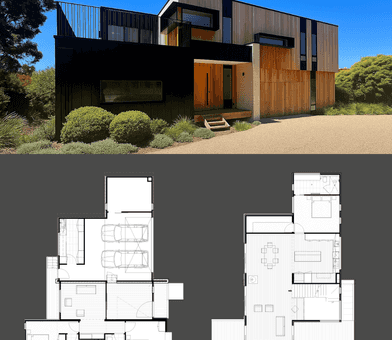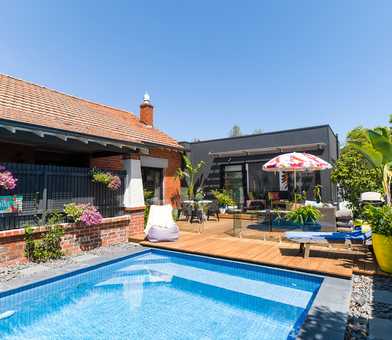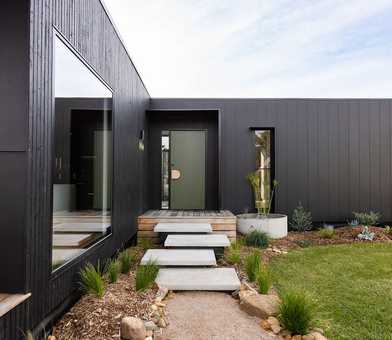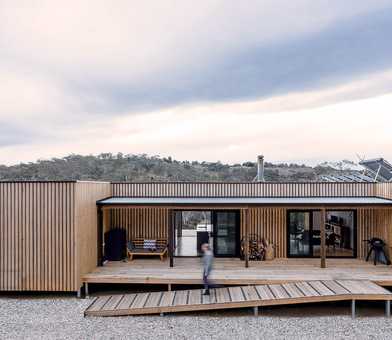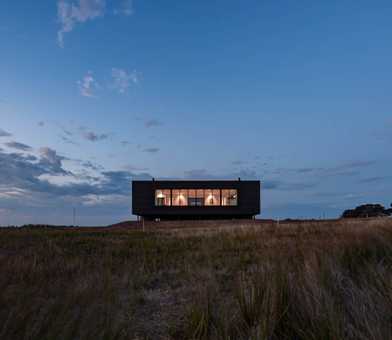At Ecoliv, sustainable design is the driving principle behind what we do. Our aim is to create homes with the highest possible energy rating that minimise the need for artificial heating and cooling and the associated financial and environmental costs. According to the Australian Department of the Environment and Energy, warming and cooling can account for up to 50% of energy used in Australian homes. This is an enormous amount, highlighting how important it is to choose the right cooling and heating solutions for your energy efficient home.
Our designs utilise many energy efficient features and are oriented to avoid the need for cyclical cooling and heating. Through our commitment to passive solar design principles we maximise natural warming and cooling processes. In other words, we strive to design our prefab homes to maintain coolness in summer and warmth in winter avoiding artificial temperature control where possible.
All our homes are rated under the National Home Energy Rating System (NatHERS) to ensure they meet a minimum 7-star energy rating. Through a range of design and material choices, such as orientation, insulation and double glazing, we are able to reduce the need for artificial heating and cooling and create you the perfect energy-efficient home design.
In the event of climate extremes, some artificial heating and cooling systems can ensure comfortable internal temperatures. We have a range of energy-efficient options available to choose from. Read about more energy saving tips on our blog. Some of the most sustainable heating and cooling options available for homes include:
Ceiling Fans
Ceiling fans are a cost-effective way to keep cool in hot climates and supplement your cooling needs. We offer a range of ceiling fans in our Ecoliv homes which deliver air circulation and require lower input power. Our range comes in a variety of colours to suit your style and optional light sources including energy efficient LED bulbs.
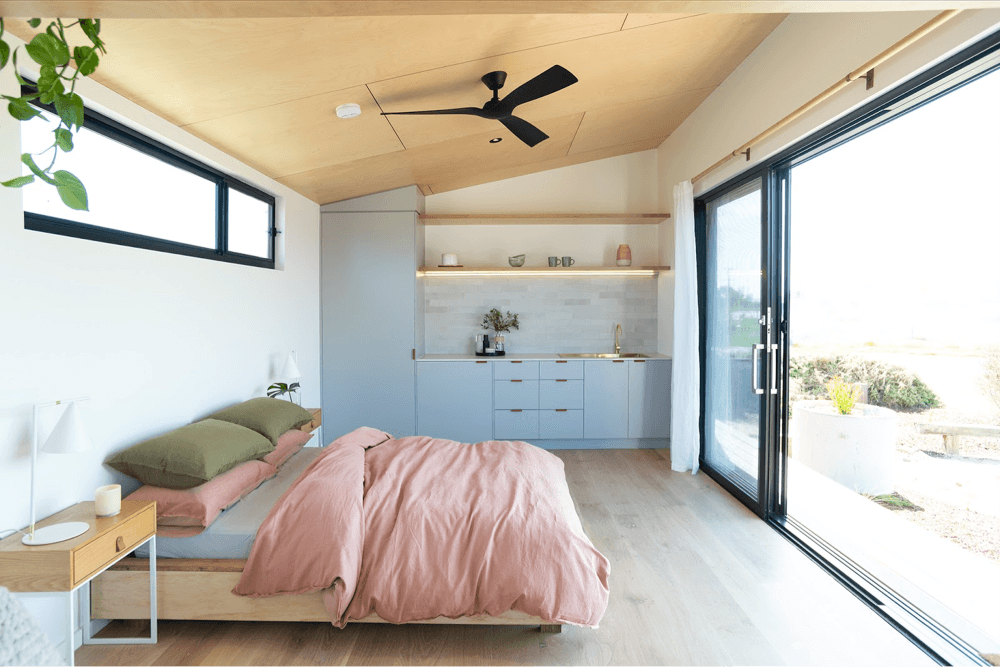
A Wood Heating System
Wood heating can act as a great source of heating to your Ecoliv energy efficient home, especially if you are located rurally and have access to a ready supply of wood. The process of a wood heater is simple. As the stove burns off the wood, it radiates heat through the walls and the top, warming up the immediate surroundings.
Wood heaters can be a very efficient choice for small spaces or good additional heating, if you live in cold climates. If you are considering a wood heater, the installation process is critical to how environmentally friendly the heater is. We are partnered with Nectre to offer the N60 fireplace in our homes. The N60 rates very well for energy efficiency and has very low carbon emissions. Not only is it an effective heating solution, but it also offers a great cosy aesthetic addition to your home.
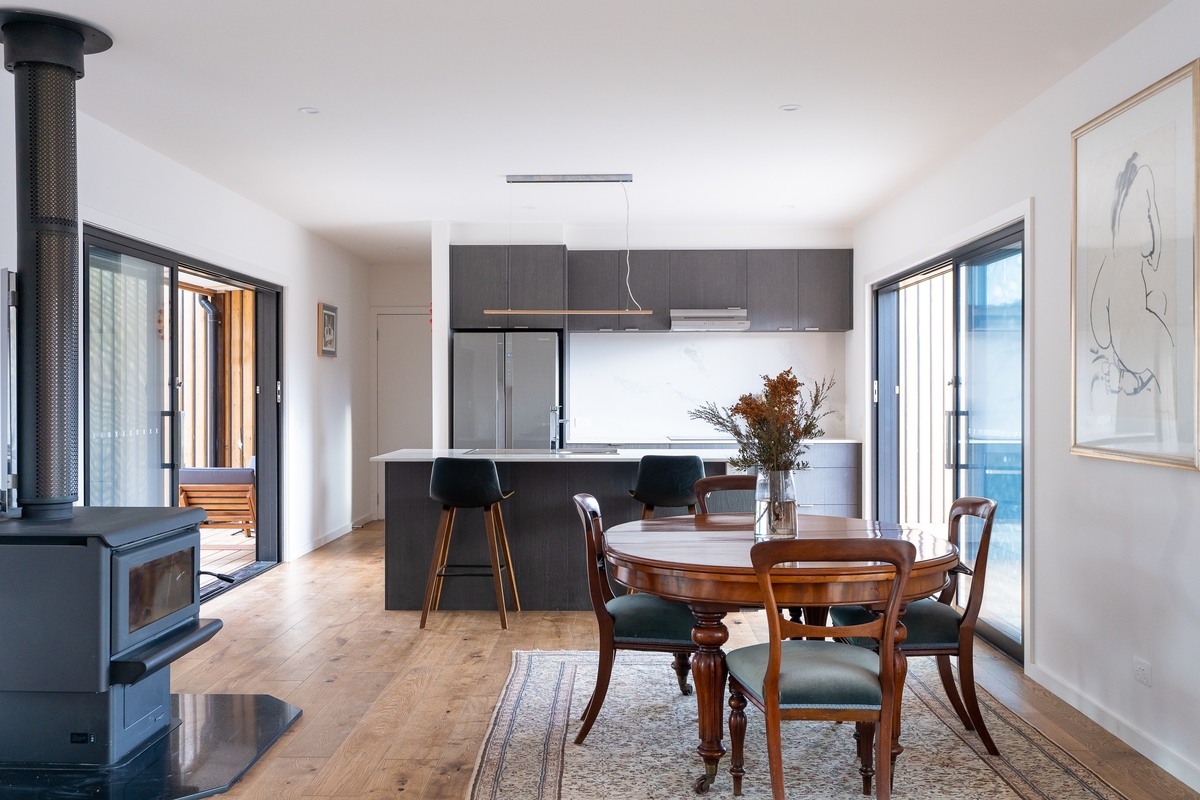
Split Systems: Reverse-cycle Air Conditioners
Split systems are a very popular choice of electric heater and air conditioning for homeowners. They are a comprehensive solution to both cooling and heating and their installation is relatively inexpensive. Ecoliv have partnered with Panasonic to offer a range of split-system solutions, which all prioritise energy efficiency. New technology has also improved the energy efficiency rating of split-systems, as split-systems can now be programmed to respond to temperature changes in the environment and automatically switch off when no longer needed. Split systems may be run entirely using solar power, furthering their energy efficiency and promoting a greenhouse-neutral output.
Solar Hydronic: Energy Efficient Heating
Solar hydronic heating is quickly gaining recognition as an energy-efficient heating system for bringing warm air into the home. If you opt for solar hydronic heating, a solar evacuated tube system will be fitted onto the roof of your energy efficient home. Hot water can be extracted from this system year round. This water is then channelled through insulated piping and stored in hot water tanks. It is then pumped through the radiator panels or internal piping of your hydronic heating system, situated inside your home. This option is sustainable and is also very cost efficient.
Ducted or Central Heating Options
Ducted heating systems are central heating systems that use a network of air ducts to distribute heat throughout a building. It is a great heating system for your home as it is typically more energy efficient than other types of heating, such as portable electric heaters because they distribute heat evenly and efficiently around the home.
Ducted systems are required to meet certain energy efficiency standards, and they may be rated on an energy efficiency label using a scale from 0 to 6 stars. The star rating is determined by the system's energy efficiency rating, which is a measure of how much energy the system uses compared to similar products.
There are several factors that can affect the energy efficiency of a ducted heating system, including the size of the system, the type of fuel it uses and the quality of the air ducts. Proper maintenance and regular cleaning of the air ducts can also help to improve the system's energy efficiency.
Seeing as they can help to reduce energy bills and reduce the building's carbon footprint, ducted heating systems are a highly efficient and effective way to heat your home.
A Note About Energy Rating Labels
In Australia, cooling and heating energy rating labels are designed to provide information about the energy efficiency of heaters and cooling systems. The purpose of these labels is to help consumers compare the energy efficiency of different systems and make a better-informed decision about which product to purchase.
Energy efficiency labels are typically displayed on a scale from 0 to 6 stars, with 6 stars indicating the highest level of energy efficiency. The number of stars is determined by the system's energy efficiency rating, which is a measure of how much energy the system uses compared to similar products.
Energy efficiency labels may also include other information, such as the system's size and capacity, the type of fuel it uses, and its warranty. Some labels may also provide information about the system's environmental impact, such as its potential to emit greenhouse gases.
Heating and Cooling Your Ecoliv Sustainable Home
When exploring options to heat or cool your place and make your home comfortable year round, energy efficient home builders (like us!) can help you to choose the right cooling and heating system to suit your climate, location and usage requirements. When you build an Ecoliv prefabricated modular home, you are choosing a sustainable, operationally efficient and environmentally conscious home for the future.
For more information speak to our team at Ecoliv now.
Featured image credit: Ecoliv Buildings Eco Studio Project
